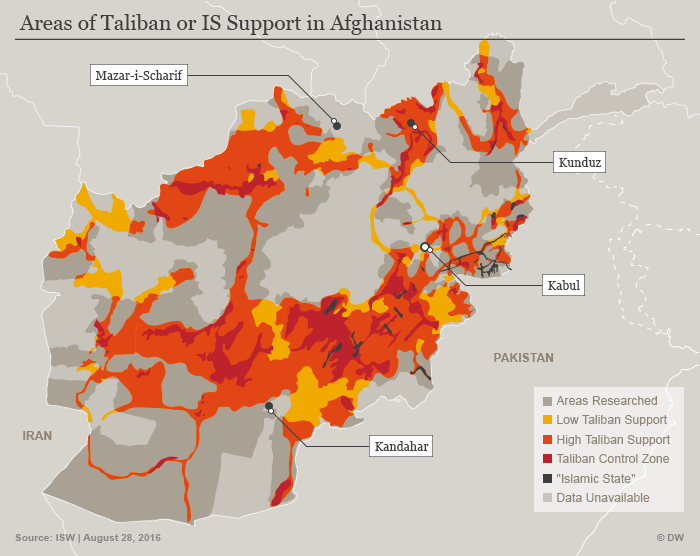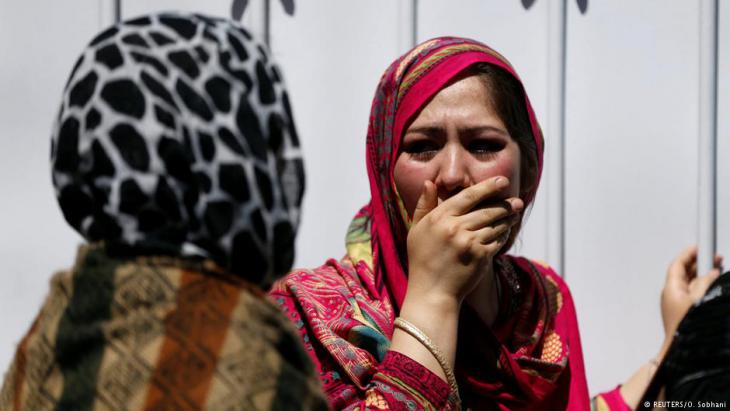War without end

In June 2017, U.S. Secretary of Defence Jim Mattis summed up the status of the United States' longest war in one straightforward sentence given to the Senate Armed Services Committee, "We are not winning right now in Afghanistan." He then vowed to "correct this as soon as possible." It has been more than a month and this correction has yet to take place.
Speaking to reporters at a lunch meeting on 18 July with four U.S. service members who served on the ground in Afghanistan, President Trump said, "We've been there for now close to 17 years and I want to find out why we've been there for 17 years, how it's going and what we should do in terms of additional ideas." He is the third U.S. president after George W. Bush and Barack Obama to oversee operations in Afghanistan.
According to a report released on 2 August by the NBC news network, one day after this July lunch meeting, Trump gathered his top security advisors in the White House situation room, where he reportedly expressed his frustration at the "lack of progress" in Afghanistan. At the meeting, Trump also reportedly suggested firing the top U.S. commander in Afghanistan, General John Nicholson, saying that he was receiving "bad advice" from him.
Peacekeepers turn combat troops
After the terror attacks of 11 September 2001, two missions were launched simultaneously in Afghanistan: the ″Enduring Freedom″ anti-terror operation and ISAF, the international peace-keeping force with U.N. mandate. Originally, some 5000 ISAF troops were responsible for providing the new regime under President Hamid Karzai with a safe environment in Kabul. In the rest of the country, ″Enduring Freedom″ was engaged in open combat.
In 2003, the deployment of ISAF troops was expanded to cover the whole of Afghanistan; the distinction between ″Enduring Freedom″ and ISAF became blurred. Peace-keepers increasingly found themselves in combat situations.

When he inherited the war from President Bush, Obama tried to stabilise the situation with a massive troop increase and in 2011 there were nearly 140,000 international forces stationed in Afghanistan. At the same time the Obama administration outlined a strategy of ending the U.S. combat mission by the end of 2014. To this day, that has only succeeded on paper.
No exit strategy
There are currently 13,000 foreign troops stationed in Afghanistan involved in two missions. The NATO-coordinated forces formerly known as ISAF are now responsible for training and advising Afghan security forces under the mission "Resolute Support". The anti-terror mission "Enduring Freedom" is now known as "Freedom's Sentinel," and involves primarily U.S. special forces supported by armed drones and air forces. Although the missions are separated on paper, there is once again the risk of them blending together.
The UN has been keeping track of civilian casualties in Afghanistan since 2009 and the numbers are continually increasing. In the first six months of 2017, 1,662 civilians were killed. A resurgent Taliban and other terror outfits like the so-called "Islamic State" have been putting urban centres in their crosshairs. According to the UN, 19 percent of civilian victims this year have been killed in the capital Kabul.International missions isolated
On 31 May 2017, the Taliban carried out their deadliest attack in Kabul since 2001. In the direct vicinity of the German embassy a suicide bomber detonated explosives placed in a water tanker. More than 150 people were killed. The German embassy was then vacated – as was the case in Mazar-i-Sharif in November 2016 after the German consulate was destroyed in a bombing. International missions are hidden behind ever higher protective barriers and diplomacy takes place in isolation and far removed from the general population.
Afghan security forces are suffering heavy losses and currently control less than 60 percent of the country. The U.S. and its partners, the most powerful military alliance in the world, have no exit strategy. "This war cannot be won with bombs," asserts Sima Samar, chairperson of the Afghan Independent Human Rights Commission in Kabul. "It can be won by winning public support through the promotion of accountability and justice. Corruption is another factor for the growing distance between the people and state institutions. And so is the friendship of the international community with corrupt warlords."
There are currently many indicators that the U.S. and NATO intend sending more troops to Afghanistan in an attempt to once again turn the tide. The figure currently being bandied about is 4,000 soldiers.
But according to Wieland-Karimi from ZIF, more soldiers cannot rectify what politicians have neglected. "Pacification can only be achieved when international, regional and national actors develop a collective strategy and objective," says Wieland-Karimi. "They must sit at one table and then make their respective positions transparent." The expert adds that the political will of all parties is key along with the support of international institutions like the United Nations (UN). "It is a complex and lengthy negotiation process, but without it there will never be a peaceful solution," said Wieland-Karimi.
Civilians have many enemies
A peaceful solution seems to be years away. Fighting and terrorist attacks are reported from almost all provinces, turning an increasing number of people into refugees in their own country. According to the United Nations, more than 170,000 Afghans have been made homeless since January 2017.
Afghanistan has constantly been in a state of war for almost four decades. In the 1980s, the Soviet Union occupied the country with over 100,000 troops. The long period of conflict has socially and politically splintered the multi-ethnic Afghan society.
The current national unity government in Kabul, led by President Ashraf Ghani and Chief Executive Abdullah Abdullah, has been paralyzed by acute internal power struggles. There is increasing opposition from within. In a bid to stabilise the situation, the international military mission continues to work closely with local and regional leaders, many of whom are involved in drug trafficking, human rights abuses, sexual crimes and other criminal activities. Some, like Vice President Rashid Dostum, have their own private militias. Dostum is currently facing accusations that he ordered a political rival to be raped and tortured. The vice president has been in Turkey since May this year.
This culture of impunity "provides a great legitimacy gap that allows the Taliban and other militant groups to exploit people's grievances", stresses the Afghan political scientist Niamatullah Ibrahimi. He considers the power vacuum to be a dangerous breeding ground for jihadists. Ibrahimi strongly urges the international community to "work closely with President Ghani and the political opposition groups to develop a common political consensus."A proxy war
Although Afghanistan ceased to be al-Qaida's headquarters following the U.S. invasion, about 20 terror outfits are currently active in the war-ravaged desolate nation. Alliances are fluid. Fighters move from one group to the other. Moreover, many nations such as Pakistan, India, Iran, China and Russia see Afghanistan as vital to their strategic, economic and security interests. As a result, they have tried to influence developments in the country.
Pakistan desperately wants to prevent the formation of a government in Kabul that supports Islamabad's archrival India. That's why the Taliban have received massive from Pakistan from the outset, although Islamabad officially joined hands with the U.S. in its war on terror after the 9/11 attacks. In Pakistan's border areas, Taliban fighters continue to find safe harbour.

India, meanwhile, wants to shrink Pakistani influence and expand its regional power. Iran wants to prevent the U.S. to set up permanent military bases in its neighbouring country. Tehran also aims to support the Shia minority in Afghanistan – a community that has faced many attacks. Russia wants to prevent a jihadist wave from spilling over from Afghanistan into Central Asia. China is striving to build an economic corridor that also passes through Afghanistan. Both Russia and China are irked by the U.S. presence in the region. In addition to these factors, there is also the massive flow of money to the Taliban, as well as the self-styled "Islamic State," emanating from the Gulf Arab countries.
There is an active struggle for allies on the Afghan battlefield. "The actors destabilise each other," says Almut Wieland-Karimi, underlining the "tectonic shifts in power politics of the global order."
Fragile progress
So is Afghanistan a failed state? Hundreds of billions of dollars have flowed into the country over the past 16 years, most of it coming from the U.S.. This has brought advances in infrastructure, education and health care and helped bring the country out of isolation. There is also a lively Afghan media landscape evolving with widespread development of Internet and mobile technologies. There is a young, dedicated elite that are committed to the reconstruction of their country.
But all of these advances are reversible. The Afghan state that emerged after the fall of the Taliban regime in 2001 cannot survive without foreign military and financial support. Young Afghans are the second-largest refugee group in Europe. This is a dilemma that even a new U.S. commander in Afghanistan would not be able to resolve.
Sandra Petersmann
© Deutsche Welle 2017